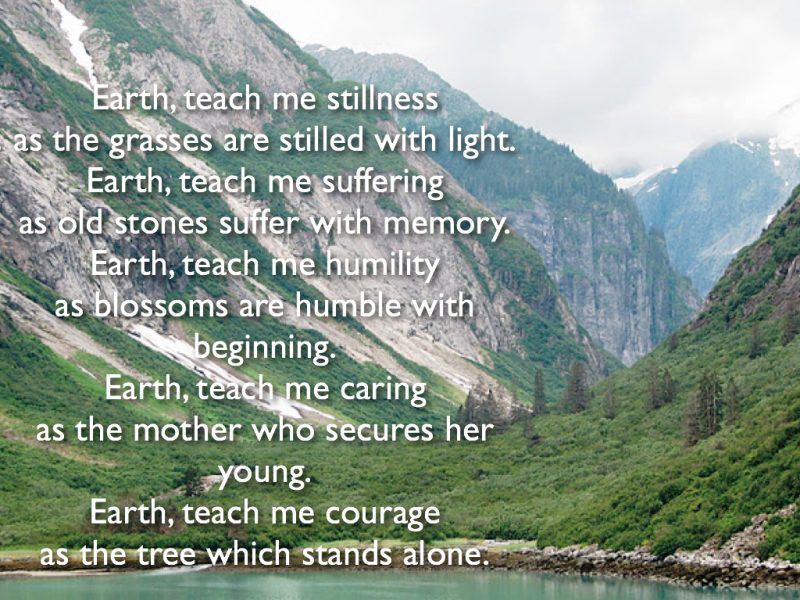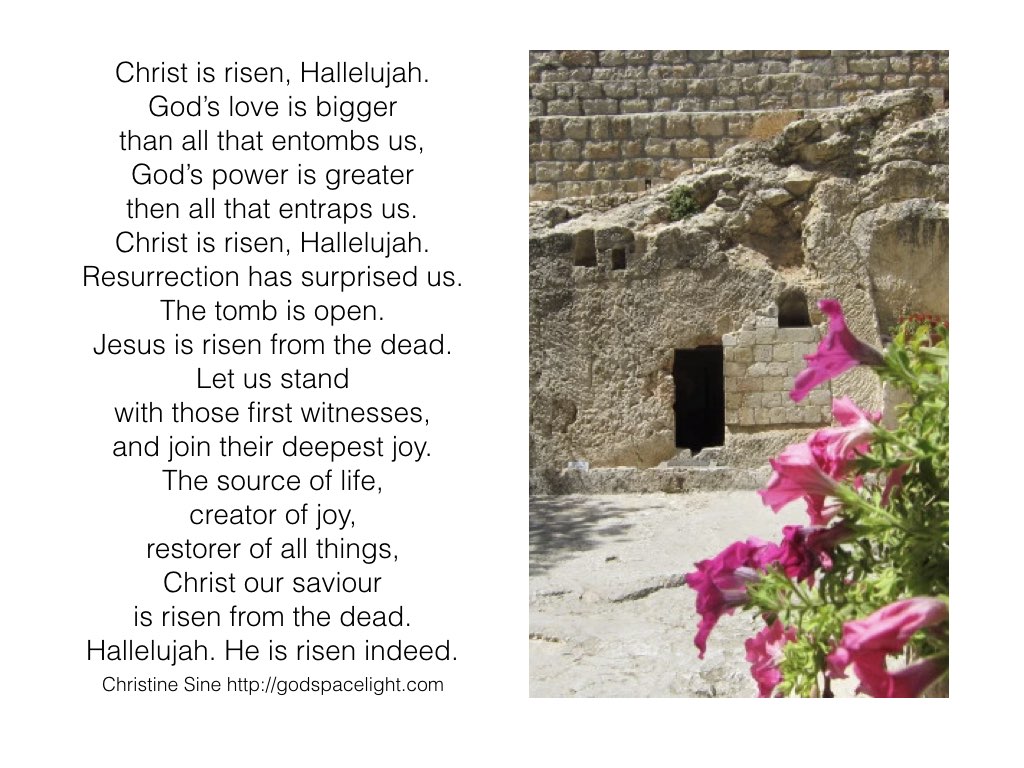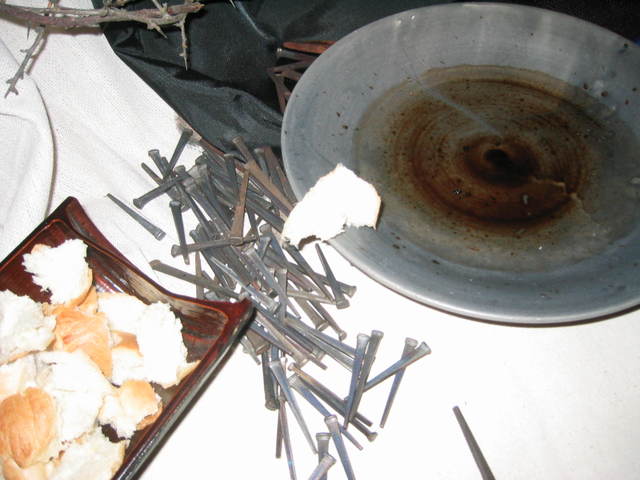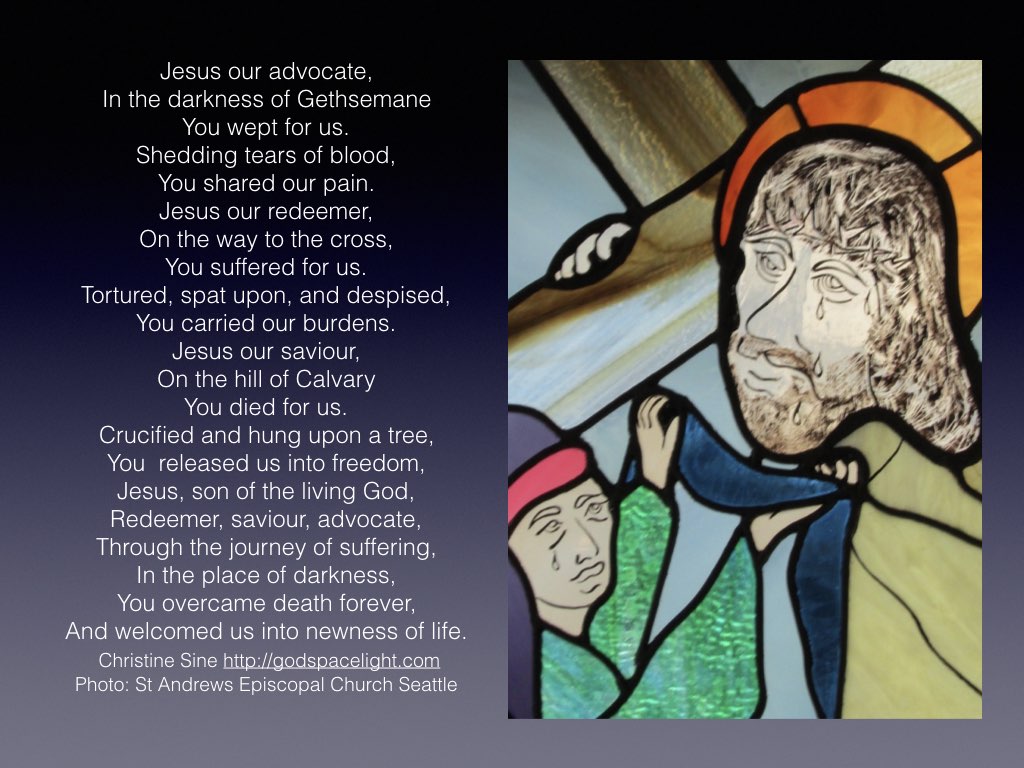by Christine Sine
A daily dose of awe and wonder makes us more compassionate and caring people. Unfortunately the research suggests that we live in an awe deprived world. So what can we read to help us? Here is a list of the books I found most helpful when working on my book The Gift of Wonder.
Christine Aroney-Sine, To Garden With God
_____________ The Gift of Wonder
Greg Boyle, Barking to the Choir: The Power of Radical Kinship
Hans Urs von Balthasar, Unless You Become Like This Child
Matthew Fox, Creativity: Where the Divine and Human Meet
Judy Brown Hull, When You Receive a Child: Reflections on Luke 9:46-48
Dalai Lama and Desmond Tutu, The Book of Joy: Lasting Happiness in a Changing World
John Medina, Brain Rules for Aging Well: 10 Principles for Staying Vital, Happy and Sharp
Sybil McBeth, Praying in Color: Drawing a New Path to God
John O’Donohue, Beauty: The Invisible Embrace
________________ Walking in Wonder: Eternal Wisdom for a Modern World
Christine Valters Paintner, Lectio Divina; The Sacred Art
__________ Eyes of the Heart: Photography as a Spiritual Practice
Joyce Rupp, The Cup of Life: A Guide to Spiritual Growth
Ann Voskamp, One Thousand Gifts: A Dare to Live Fully Right Where You Are
NOTE: As an Amazon Associate I receive a small amount for purchases made through links above. Thank you for supporting Godspace in this way.
by Christine Sine
Have you had your awe and wonder sighting for today? If not it’s time to go out and take notice. Last week I commented: “Our daily experience of life, God and God’s world are meant to inspire us with awe and wonder. Our failure to notice the miracles around us is a failure of the spirit as well as the senses.” And today is Earth Day, a fitting celebration for the day after Easter and a great way to begin our awe and wonder challenge.
This is the season for noticing and responding in awe to the presence of Jesus in us, and around us, not just in people we meet but in the creation as well. Jesus is constantly appearing in our midst but we rarely seem to take notice.
My Senses Are Awakened to Read God’s Presence.
In The Gift of Wonder, I talk about the practice of Lectio Tierra, a great way to attune our senses to the wonder of God. This practice is similar to Lectio Divina from which it is adapted. As I wander through the forest, brush against my lavender or listen to the music of water cascading over rocks, my senses are awakened to”read” God’s presence. Anything that catches my attention and shimmers with the presence of God provides fuel for reflection.
My eyes are drawn to the gnarled and twisted branches of my ancient sage bush. I stop, look and listen, not forcing a revelation but waiting in silence for God to nudge me. I reach out and pick a leaf, and gasp in awe at the fragrance that clings to my fingers. What story does it hold I wonder? How might it speak to me of God?
Now I Meditate
Now I meditate. I crush the leaf between my fingers and am transported back in time. Sage has a very long and rich history due to both its medicinal and culinary uses. At one time, the French produced bountiful crops of sage for tea. Ironically the Chinese became enamored with French sage tea, and would trade four pounds of Chinese tea for every one pound of sage tea. The Romans considered it had healing properties and for native Americans it is an important ceremonial plant, used by many tribes as an incense and purifying herb. I know it best for its culinary properties. I love to use it when I roast chicken or make vegetable soup.
It is possible that the burning bush in Exodus 3 is sage I remember. Should I like Moses take off my shoes as I meditate and acknowledge that in the presence of this small part of God’s creation I stand on holy ground?
I Pray
Now I pray. I thank God for this gift to so many cultures across the globe and throughout time and am reminded of Revelation 8:4 “The smoke of the incense mixed with the prayers of God’s people and billowed up before God.” I thank God for the fragrance that clings to me, and for the incense that rises from my life as I too am crushed and prepared for use. Perhaps others will brush against me and be awed by the incense of God in my life. Perhaps others will seek me out to add to their lives and savor who they are with the presence of God. I hope that my fragrance and flavor will continue to cling to others and be shared with all that I meet.
Lastly I contemplate
The last step is contemplation. I pause, running my hands over the fragrant fragments in my hand. I look around at the other plants in my garden. Some are greening after a long winter’s rest. Others are in bloom vibrant with color and fragrant with their own perfume.I am not alone. Incense rises to God from every part of this garden. I breathe in and absorb the insights God has given me that enable me to move into a place of rest and peace. I can receive love, healing and grace from God, together with those around me, and with the witnesses of every tribe and nation that have gone before me. I feel at one with God’s world and will all that help me move towards God’s wholeness.
I finish with this Ute prayer that I found many years ago and my heart overflows with thanksgiving
Earth Teach Me to Remember
Earth teach me stillness
as the grasses are stilled with light.
Earth teach me suffering
as old stones suffer with memory.
Earth teach me humility
as blossoms are humble with beginning.
Earth Teach me caring
as the mother who secures her young.
Earth teach me courage
as the tree which stands alone.
Earth teach me limitation
as the ant which crawls on the ground.
Earth teach me freedom
as the eagle which soars in the sky.
Earth teach me resignation
as the leaves which die in the fall.
Earth teach me regeneration
as the seed which rises in the spring.
Earth teach me to forget myself
as melted snow forgets its life.
Earth teach me to remember kindness
as dry fields weep in the rain.
NOTE: As an Amazon Associate I receive a small amount for purchases made through appropriate links. Thank you for supporting Godspace in this way.
by Christine Sine
Christ is risen, he is risen indeed!
The power of God for life and resurrection is amazing. I stand in awe and wonder, that not only did Christ rise two thousand years ago, but he still stands in our midst bringing healing, reconciliation and flourishing to all who will receive it.
by Christine Sine
A few years ago we attended a Good Friday Tenebrae service at our church. It was a very moving service of readings from those who have walked before us as well as from scripture. We started with the sanctuary alive with light and ended with it in darkness except for the Christ candle which stood at the foot of the cross.
I was reminded of the service as I reflected on this broken image of Jesus today. Jesus body was broken and all seemed lost. Imagine how hard Saturday must have been for the disciples just as it is hard for us to live in the valley where hope seems lost and the world seems untouched by the promises of God. We mourn too for broken hopes and promises. All seems to be in darkness but out of brokenness can come new life.
Here are the readings that most impacted me.
It is in the darkness, when there is nothing left in us that can please or comfort our minds, when we seem to be useless and worthy of all contempt, when we seem to have failed, when we seem to be destroyed and devoured, it is then that the deep and secret selfishness that is too close to us for us to identify is stripped away from our souls. It is in this darkness that we find liberty. It is in this abandonment that we are made strong. This is the night which empties us and makes us pure. (Thomas Merton)
To each one of us Christ is saying: If you want your life and mission to be fruitful, like mine, do as I do. Be converted into a seed that lets itself be buried. Let yourself be killed. Do not be afraid. Those who shun suffering will remain alone. No one is more alone than the selfish. But if you give your life out of love for others, as I give mine for all, you will reap a great harvest. (Oscar Romero)
This is the night which empties us and makes us whole.
Out of my reflections on this service came this poem:
Today we mourn.
For promises unfulfilled
for wholeness unrealized
for brokenness still afflicting.
Today there is only darkness.
Our hopes are buried
our longings shrouded
our desires entombed.
Today the grave engulfs us.
We walk in hell
empty, stripped of life
no light only darkness.
Today God seems to have failed.
Yet here we find freedom
Between death and resurrection
This is the night which empties us
and makes us whole.
By Catherine Lawton —
We grieve when snow falls
on Good Friday eve.
What about the greening,
the beginnings of spring? when
like manna fallen from Heaven–
“My body broken for you” into
flakes and crumbs–
soft, pure-white flesh
spread upon all that lies
both dormant and sprouting,
at morn reflects the rising sun;
except in rockiest places,
saturates fallow and seeded,
both broken and wasted ground.
By Lilly Lewin
I’ve been using a hashtag this week on instagram #almostEaster. It truly is almost Easter, but there are important things that happen this weekend before the celebration on Sunday. Here are two poems to help you process Good Friday and Holy Saturday. Sit with the one that resonates with you. Print it out, our print out both. Ponder the poem or poems as you take a walk, or sit somewhere quietly. You might draw something or journal some in response. What if you didn’t know that Sunday was coming? What if you didn’t have any hope of an Easter and the resurrection? Remember, that’s just what the disciples faced that weekend.
You might take time to watch the Gospel of John on Netflix or the great documentary called ‘ Jesus Count Down to Calvary” narrated by Hugh Bonneville of Downton Abbey to help you engage the feeling before the hope of resurrection.
May we remember the silent tomb and the despair of uncertainty of that sabbath day so long ago, before we rush to celebrate this Sunday.
God on a Stick by Paul Hobbs
They spit on his face and then they crucify him.
Jesus our Lord
He dies as a sinner
He dies as a blasphemer,
as an idolater,
as one who denies God
As one who betrays him
I stand before the cross and wonder
He is not guilty of these things but takes our place
He dies as one who boasts,
who gossips
As one who dishonors his parents
As a cheat, as a liar, as a thief
He dies as a fraud and an embezzler
I stand before the cross and fear
He is not guilty of these things but takes our place.
He dies as a sinner
He dies as one with evil thoughts
As a slave to lust, as a fornicator
As an adulterer, as an abuser of children
I kneel before the cross and weep
He is not guilty of these things but takes our place.
He dies as one full of jealousy
As one who is selfish, unkind and rude
As one who destructively manipulates others.
As one who envies and hates
He dies as a sadist
As one who destroys and murders
I pray before the cross and rejoice
He is not guilty of these things but takes our place
He is not to blame but dies to take the blame for us.
He is dying to forgive us
Stand, stand…
And watch Jesus die
Alone and with nothing…
God on a stick.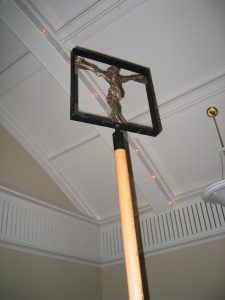
The Day before Easter by Lilly Lewin
the day before easter
the Light of the World…
pierced our darkness,
set us free
we did not notice him
we expected something else
we wanted our own impression of a savior
not one who died and was buried
not one who suffered
not one who was condemned
the Light of the World ….
pierced our darkness
set us free
we missed the gift
we closed our eyes
we didn’t understand
we didn’t want to listen
when he said he had to die
we denied him
we betrayed him
we got scared and ran away
the Light of the World…
pierced our darkness
set us free
we took him down
we wrapped him with spices
we buried him in the tomb
we couldn’t even mourn him there
we were afraid
it was the sabbath
the Light of the World
who pierced our darkness
was no longer….
the Light, our Light, was gone
snuffed out, buried in the cold stone tomb
no hope,
no joy,
no laughter on this sabbath day…
lilly lewin April 2004
©lilly lewin and freerangeworship
by Christine Sine
This Good Friday prayer which I wrote several years ago, and the image that goes with it is one of my favorites, if one can say such a thing about this awful day in the life of Jesus.
Find a quiet place where you can reflect for a few minutes on these last days of Jesus life.
Look at the photo – Jesus tears are our tears, his suffering is our suffering.
What comes to your mind as you gaze upon this image?
Now read the prayer. What is your response?
As an Amazon Associate, I receive a small amount for purchases made through appropriate links.
Thank you for supporting Godspace in this way.
When referencing or quoting Godspace Light, please be sure to include the Author (Christine Sine unless otherwise noted), the Title of the article or resource, the Source link where appropriate, and ©Godspacelight.com. Thank you!


